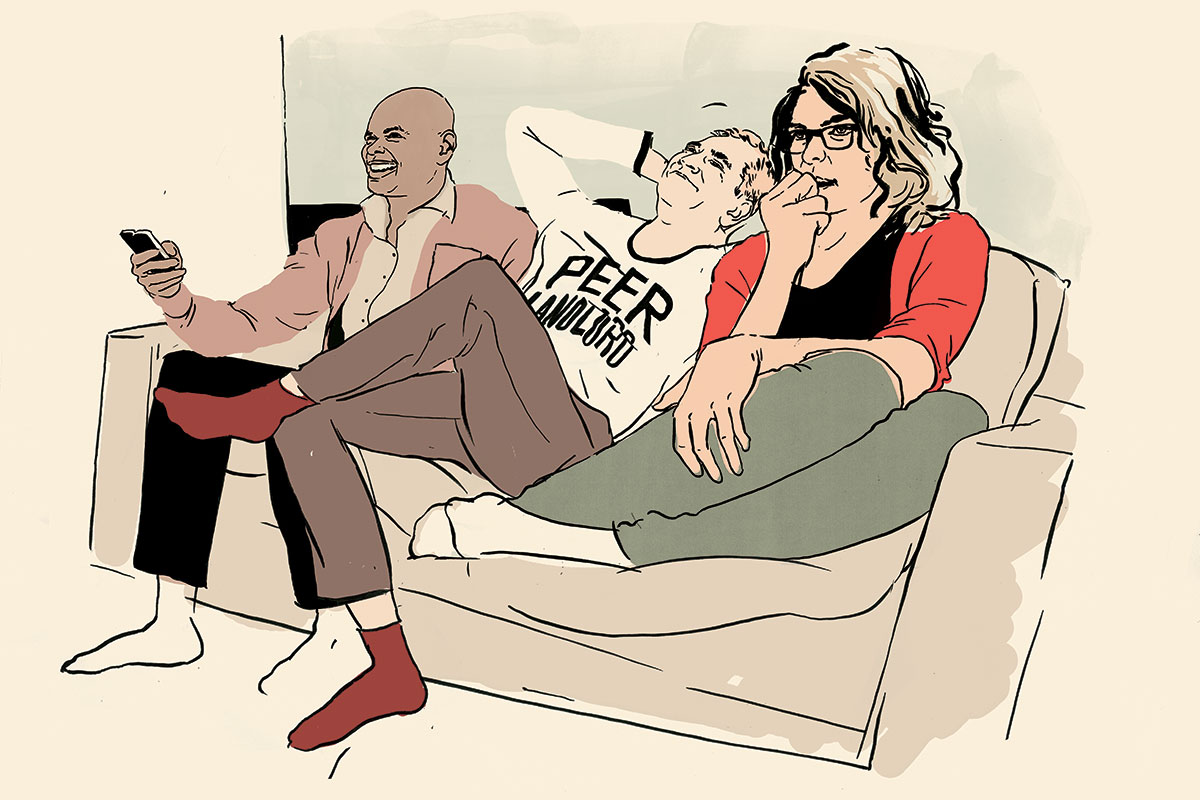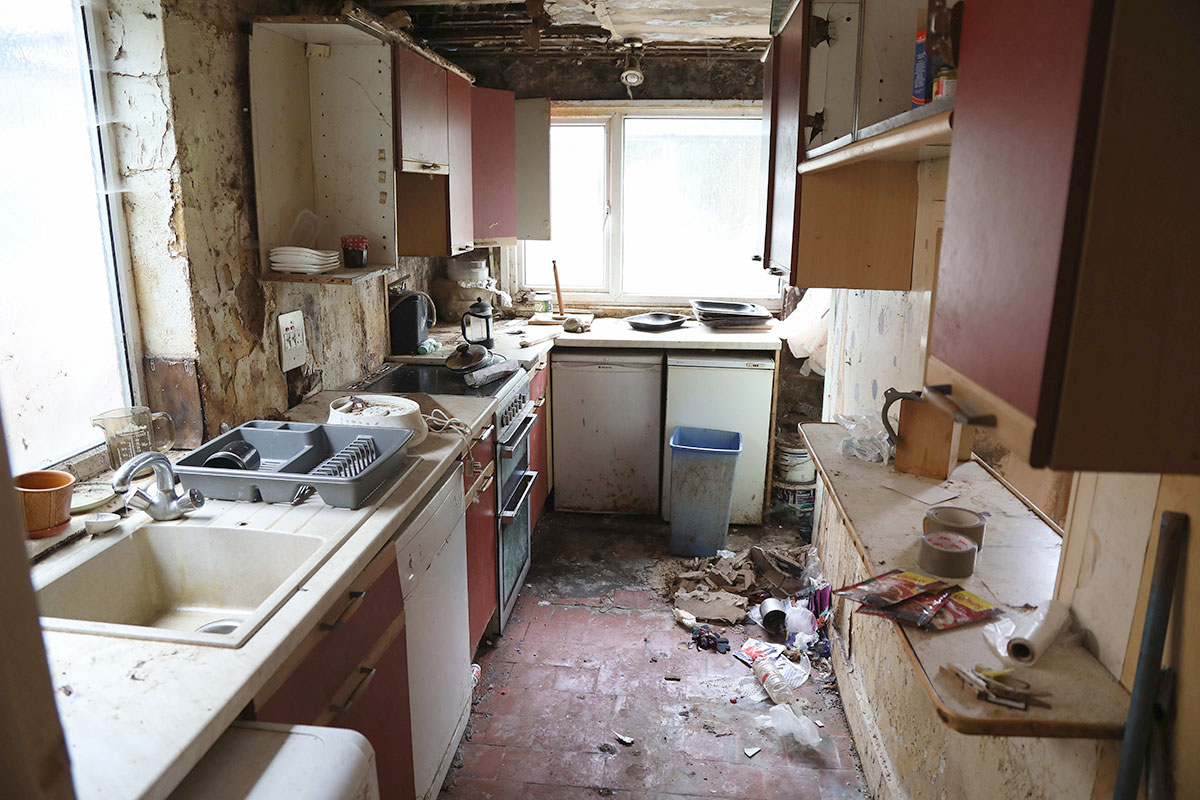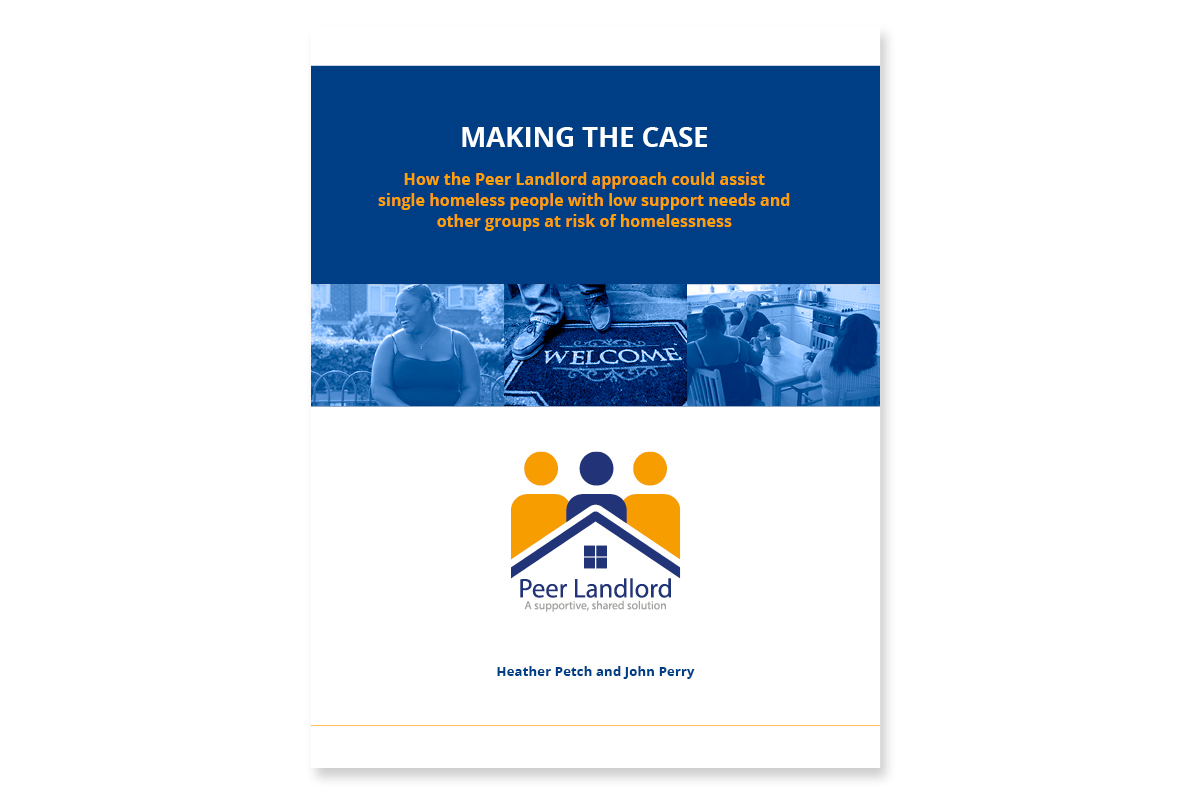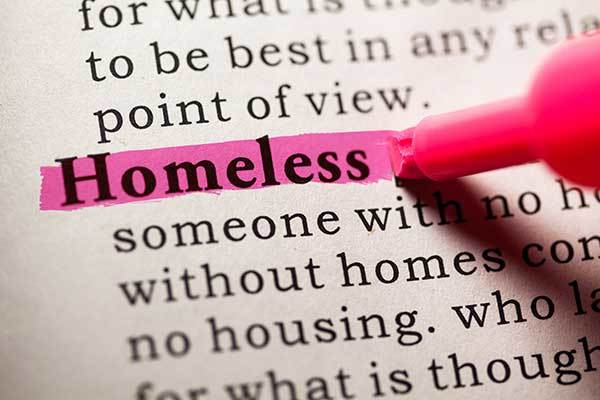You are viewing 1 of your 1 free articles
The benefits of using peer support models in shared housing
A new report says landlords should seriously consider peer support models in shared housing. Martin Hilditch explores what the benefits might be, and what’s holding schemes back. Illustration by Calum Heath
For social landlords operating in a world of benefit restrictions, trying to fulfil their social mission can feel a bit like trying to solve a Rubik’s Cube while wearing boxing gloves.
Councils in particular are working out how to meet new responsibilities for housing homeless people that were introduced this year under the Homelessness Reduction Act.
At a stroke they were required to ensure their services are designed to meet the needs of particular groups at an increased risk of becoming homeless, such as care leavers and people leaving prison. They also now need to provide more meaningful assistance to people who are
homeless or threatened with homelessness, irrespective of their priority need status – which will particularly affect the duty owed to single homeless people.
Sadly, the wider world in which councils operate remains the same: challenging.
In this context, councils are looking for new solutions. Step forward a small housing pilot project, launched five years ago, whose moment in the spotlight might finally have come.
Trials, run by charity Commonweal Housing, provided shared housing for single people who would otherwise potentially be “trapped in supported housing or hostel accommodation”. One carefully selected person in the home became the ‘peer landlord’. This was someone with similar lived experience, who helped to support other residents and took the lead on issues such as general household maintenance and dealing with benefit and rent payment issues.
Until now it has remained a relatively niche idea. The approach has been trialled in 13 properties, with 44 bed spaces, over the past five years.
But a new report, commissioned by Commonweal and written independently by housing experts Heather Petch, the former chief executive of HACT, and John Perry, a senior policy advisor at the Chartered Institute of Housing (although the report was written independently of this role), suggests the time has come for a wider roll-out.
So what do the two experts think the peer landlord scheme has to offer and, given the pilots have been going on for some years, what might be holding others back from taking it up?
The report makes it very clear that the approach is unlikely to work for everyone, and that it is aimed at single homeless people with low support needs, along with people at risk of homelessness, such as care leavers.
The Homelessness Reduction Act certainly makes the peer landlord approach “well worth looking at for local authorities examining how they provide for single people”, according to Mr Perry.
Click here to read the Making the Case report
“Options in the private sector are limited because of landlord attitudes and because of Local Housing Allowance [LHA] constraints,” he states, referring to limits on how much housing benefit households can get. “Many single homeless people don’t have the high support needs that are met by Housing First solutions” – which provide people with a home alongside intensive personalised support.
Overall, Mr Perry says he thinks the approach “deserves wider use for single people who want a secure base to look for or stay in a job”.
If it all sounds so good, why have social landlords not been following in the footsteps of the pilot projects in droves?
For Mr Perry, there are two key reasons. The first is a “cultural resistance” to shared housing among social landlords because of a perception it will be more difficult to manage. And he also thinks that the peer landlord idea is still so recent that it hasn’t really “yet been promoted”.
Given Mr Perry and Ms Petch’s report is called Making the Case, it clearly aims to address these points. So how do the authors think peer landlord schemes can make a difference?
Drawing on a previous evaluation, the report states that its main impact is “offering a pathway into housing, an opportunity for people that wouldn’t have existed before”.
What is needed to make the peer landlord model work?
- Understanding the model – and adaptability
The report says evidence points to the model working best when a peer landlord is in place – but suggests tenants could also share tasks, possibly by rotation, if no individual is able to take them on individually.
- Robust income collection methods
In some schemes individuals in the peer landlord role have to encourage other tenants to engage with landlords about rent arrears or benefit problems at an early stage.
- Selecting tenants carefully
This includes making sure the peer landlord has good communication skills, the ability to listen to other people’s views and understands how to obtain answers to queries and problems externally.
- Think about move-on from the project
The pilot projects in London have focused on supporting tenancies, due to the lack of other available options. But the report makes it clear that other projects could agree move-on protocols with councils as part of their wider allocation policies to create more spaces.
Source: ‘Making the Case’, Commonweal Housing
With perfect timing, the report is published in the week that a report by Shelter revealed more than half of families living in temporary accommodation are in work, and that there has been a 73% increase in the number of working homeless families since 2013. The Making the Case report makes it clear that single homeless people face similar problems. It suggests that single people on low incomes or without stable employment can face “difficulties in getting consistent (or even any) housing benefit/Universal Credit payments”.
It adds that “frozen LHA limits will continue to be eroded by rent inflation, making it difficult and in some areas impossible for homeless people to access the PRS [private rented sector]”.
The report argues that peer landlord schemes can provide affordable housing with low levels of support, giving the potential “to widen the accommodation options for single people, including potentially in the private rented sector where landlords might have more confidence in making shared lettings available on the peer landlord model”.
"The report refers to peer landlord schemes as supportive rather than supported housing"
It’s not all plain sailing, however. The report makes it clear there are potential pitfalls that have been identified, and that anyone setting up a peer landlord project would have to take these into account. These include having robust income collection methods, because of the potential for people’s circumstances to change.
Council tax payments have been dealt with in a variety of ways, including one organisation paying council tax for each property and another where council tax was included with the rent, according to a previous evaluation.
The difference between peer landlord schemes and supported housing must also be understood, according to Ashley Horsey, chief executive of Commonweal. The report refers to peer landlord schemes as supportive rather than supported housing
Watch a video about the project:
“We are very clear that this should never be seen as supported housing on the cheap,” he states. Instead, Commonweal sees it as providing a positive option for people “not necessarily able to just fly off into the mainstream unsupported sector”. Ideally, it would be one of a range of options used by social landlords which could be deployed to fit the individual, Mr Horsey adds.
This was a point made by Jeremy Swain, at the time chief executive at Thames Reach, in a column for Inside Housing back in 2012. Mr Swain suggested that the “ordinariness” of the shared housing solution might even pose a problem in attracting funders because if charities are looking to make an impact on politicians or potential supporters they will take them on visits to places where “need and complexity is obvious”.
Does Mr Horsey think that shared housing is something that social landlords are wary of?
“I can only postulate that that is the case,” Mr Horsey states. “I think it is perceived as the least-worst option by many [of the options available for single homeless people],” he suggests.
One of Commonweal’s intentions, he adds, is to “rehabilitate some terms that have fallen into disrepute in recent years”. This is because the lack of shared options is a significant problem, and there is the potential for it to be the best solution for some.
“For some people – people leaving care or coming off the streets – actually sticking them in a one-bed flat on their own is the worst thing you can do because of loneliness, isolation and the ability to be picked on by not particularly well-meaning associates,” Mr Horsey states. “The traditional nirvana of having a self-contained tenancy of your own is something some need, but there will be many others who do not need that in that particular point in their journey.”
Ultimately, there is one big driver that means social landlords looking to deliver homes for people on low incomes should look more seriously at the model, Mr Horsey believes.
“For some people shared housing is the only economic option available in huge swathes of the country,” he states. “We hope that the peer landlord is demonstrating a model that can work and be positive.”
At a glance: Homelessness Reduction Act 2017
The Homelessness Reduction Act 2017 came into force in England on 3 April 2018.
The key measures:
- An extension of the period ‘threatened with homelessness’ from 28 to 56 days – this means a person is treated as being threatened with homelessness if it is likely they will become homeless within 56 days
- A duty to prevent homelessness for all eligible applicants threatened with homelessness, regardless of priority need
- A duty to relieve homelessness for all eligible homeless applicants, regardless of priority need
- A duty to refer – public services will need to notify a local authority if they come into contact with someone they think may be homeless or at risk of becoming homeless
- A duty for councils to provide advisory services on homelessness, preventing homelessness and people’s rights free of charge
- A duty to access all applicants' cases and agree a personalised plan














